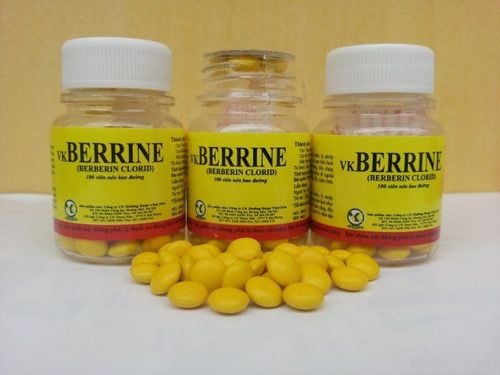This is an automatically translated article.
Is it safe to eat raw shrimp? According to the US Food and Drug Administration, raw shrimp should be avoided because of the risk of parasitic infection or foodborne illness. When choosing to eat raw shrimp, make sure that the shrimp has been frozen before to kill harmful parasites that can infect the human body. However, this does not kill harmful microorganisms, and if someone is in a high-risk group for foodborne illness, raw shrimp should be avoided. Find out more in the article below!
1. Is it safe to eat raw shrimp?
According to the FDA, people at high risk for foodborne illness include the elderly, young children, pregnant women, people with weakened immune systems, and people with low levels of stomach acid. Although shrimp is a healthy alternative to other fish that are high in mercury, it should always be cooked until it is opaque and firm.
Shrimp is a crustacean, a popular food around the world. Their shells are hard and their flesh is brown to gray in color. Shrimp have a sweet taste and a soft or firm texture, depending on the variety.
The term "shrimp" covers many different species of similar-looking shellfish. Coldwater shrimp are small shrimp and are harvested in the oceans of the northwestern and northeastern regions of the United States and Canada.
Warm water shrimp are harvested in tropical areas and are usually farmed. More than 90% of shrimp consumed in the US is farmed. Most seafood eaten in the US is imported from other countries, such as China, India, Thailand, and Vietnam.
Although shrimp are a popular delicacy in many countries, many consider them unsafe to eat raw.
So, is raw shrimp safe?
People all over the world eat shrimp and have different ways of preparing shrimp. People also eat raw shrimp and this dish is also quite popular. In some places, it is thought that the liquid inside the shrimp's head is considered a delicacy. Japan is famous for sushi made from raw seafood, in which fresh sashimi made from raw shrimp is loved by many people. In China, they also have their own way of eating raw shrimp, they eat raw shrimp after steeping in a strong alcohol called baijiu. The danger with any raw food, including shrimp, is that it can contain several species of bacteria, viruses, and parasites. These types of microorganisms can lead to food poisoning or can lead to certain diseases.
Shrimp are the most commonly consumed crustacean in the United States and account for 50% of total global aquaculture production. Because shrimp is a good source of several important nutrients for the body, including omega-3 fatty acids, vitamin B12 and iodine.
Microorganisms in shrimp can only be removed when cooked, for food safety reasons it is not recommended to eat raw shrimp. Eating raw shrimp can lead to food poisoning or microbial illness.

Tôm sống cần được sơ chế cẩn thận trước khi ăn sống
2. Potential dangers of eating raw shrimp
Each year 16.7% of Americans experience food poisoning. Eating raw shrimp increases the risk of food poisoning and is one of the contributing causes of food poisoning mentioned above.
May contain harmful bacteria
Vibrio is a bacterium found with 70 species, of which 12 are known to cause disease in humans. Vibrio is a bacteria that normally lives on shrimp. One study found 55% of 299 raw shrimp samples contained potentially harmful Vibrio species that cause conditions such as gastritis, cholera and infections. If you have a mild case of Vibriosis, you'll likely get better in about three days. But 20% of people infected with Vibrio bacteria die, sometimes within days of getting sick. Symptoms of this infection include:
Diarrhea, often with abdominal pain, vomiting, nausea, fever, Fever, chills, low blood pressure and blistering skin lesions, signs of blood infection. Fever, redness, swelling, discharge, discoloration, and pain. These are symptoms of a wound infection and can spread to the rest of the body. In addition, one study found many strains of Vibrio to be resistant to antibiotics among 100 strains of Vibrio bacteria isolated.
In a review of 10 seafood processing plants in Nigeria, 100% of shrimp contained Bacillus, which is commonly associated with diarrhea and vomiting.
Can lead to illness
Food poisoning is a common illness associated with eating foods high in bacteria. Symptoms may include: vomiting, stomach cramps, fever, and diarrhea.
Food poisoning figures show that more than 90% of food poisoning cases are caused by Salmonella, E. coli , Vibrio or Bacillus, all of which can be found parasitizing in raw shrimp. In addition, norovirus can also be found in raw shrimp.
Every year, around the world occurs about 1 billion cases of food poisoning related to diarrhea. In the United States, more than 5,000 people die annually from food poisoning-related illnesses. Elderly people, pregnant women and children should especially not eat raw or undercooked shrimp, because the immune system of this group is immature or has problems.

Ăn tôm sống có thể chứa một số nguy cơ tiềm ẩn
3. How to safely prepare shrimp?
Do not eat raw shrimp because the risk of food poisoning is very high. Therefore, it is necessary to cook shrimp to eat them safely.
As improper harvesting, handling and storage techniques can increase the risk of contamination, it is best to purchase high-quality shrimp from a reputable source. Look for manufacturers with food safety certification to choose from.
Fresh shrimp should be refrigerated and consumed within four days or frozen for up to five months.
The safest way to defrost frozen shrimp is to remove the shrimp from its packaging and store it in the refrigerator overnight or up to 24 hours. This will minimize the spread of harmful bacteria.
To prepare, wash your shrimp thoroughly, as any dirt can hide bacteria and ensure that other foods are kept at a safe distance to prevent cross-contamination.
While such techniques may reduce the growth of some harmful bacteria, they will not destroy all of the bacteria present. So even if you prepare them carefully, raw shrimp still pose a potential risk of disease.
Instead, you should cook shrimp until they are opaque or pink or have reached an internal temperature of 145 0 F (63 °C). Most harmful bacteria and viruses are eliminated during the cooking process.
promotes brain and heart health.
Please dial HOTLINE for more information or register for an appointment HERE. Download MyVinmec app to make appointments faster and to manage your bookings easily.
Reference sources: healthline.com, medicalnewstoday.com












